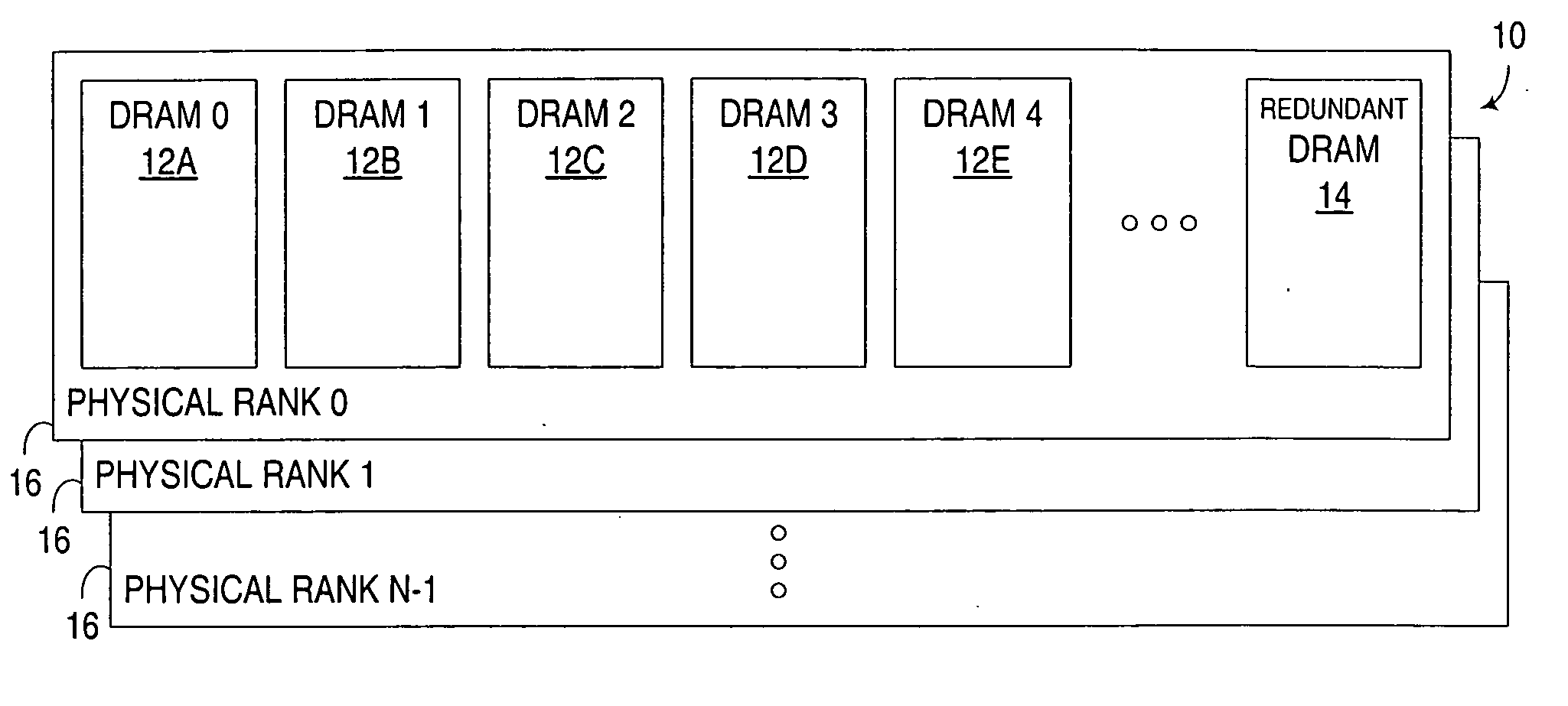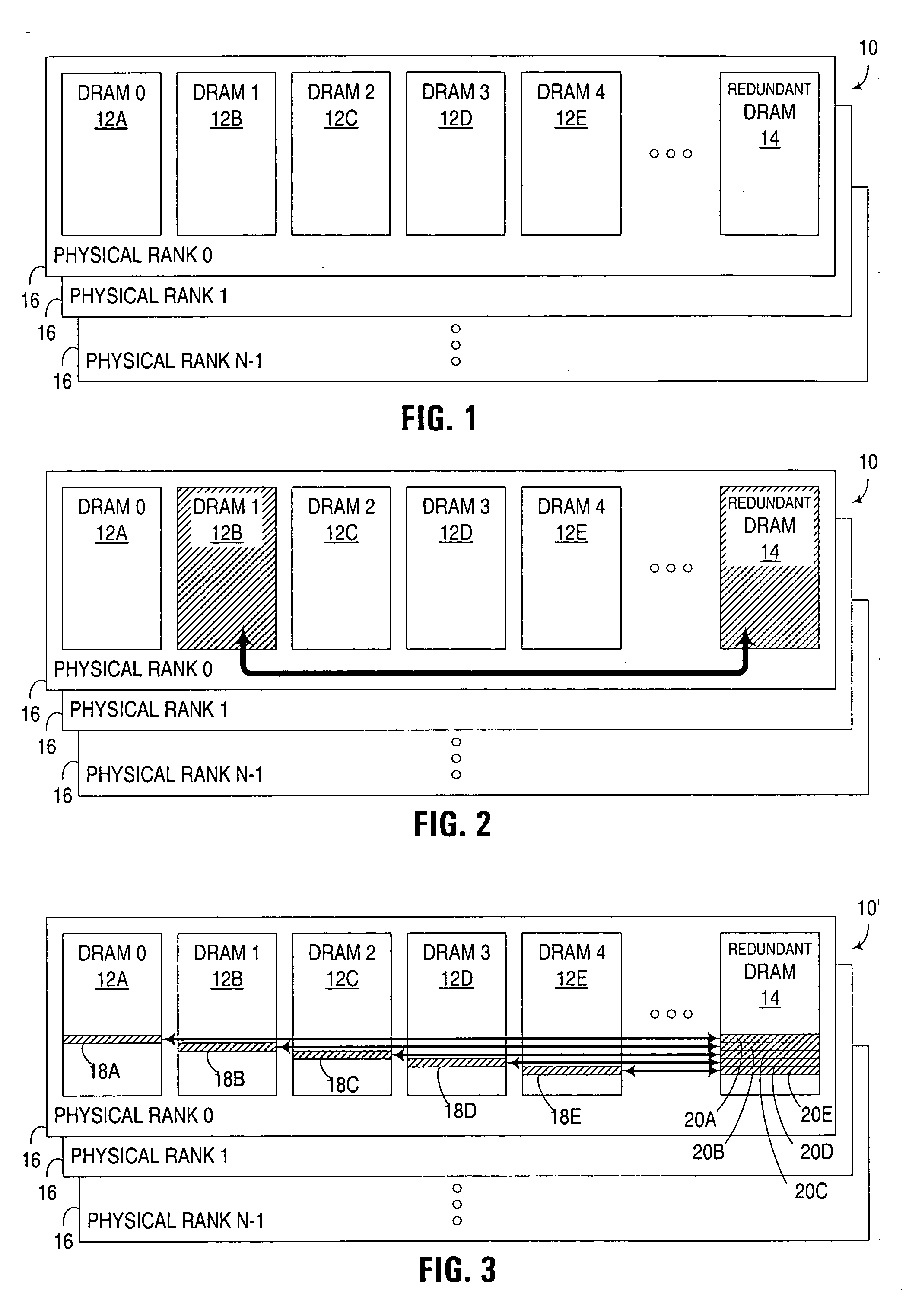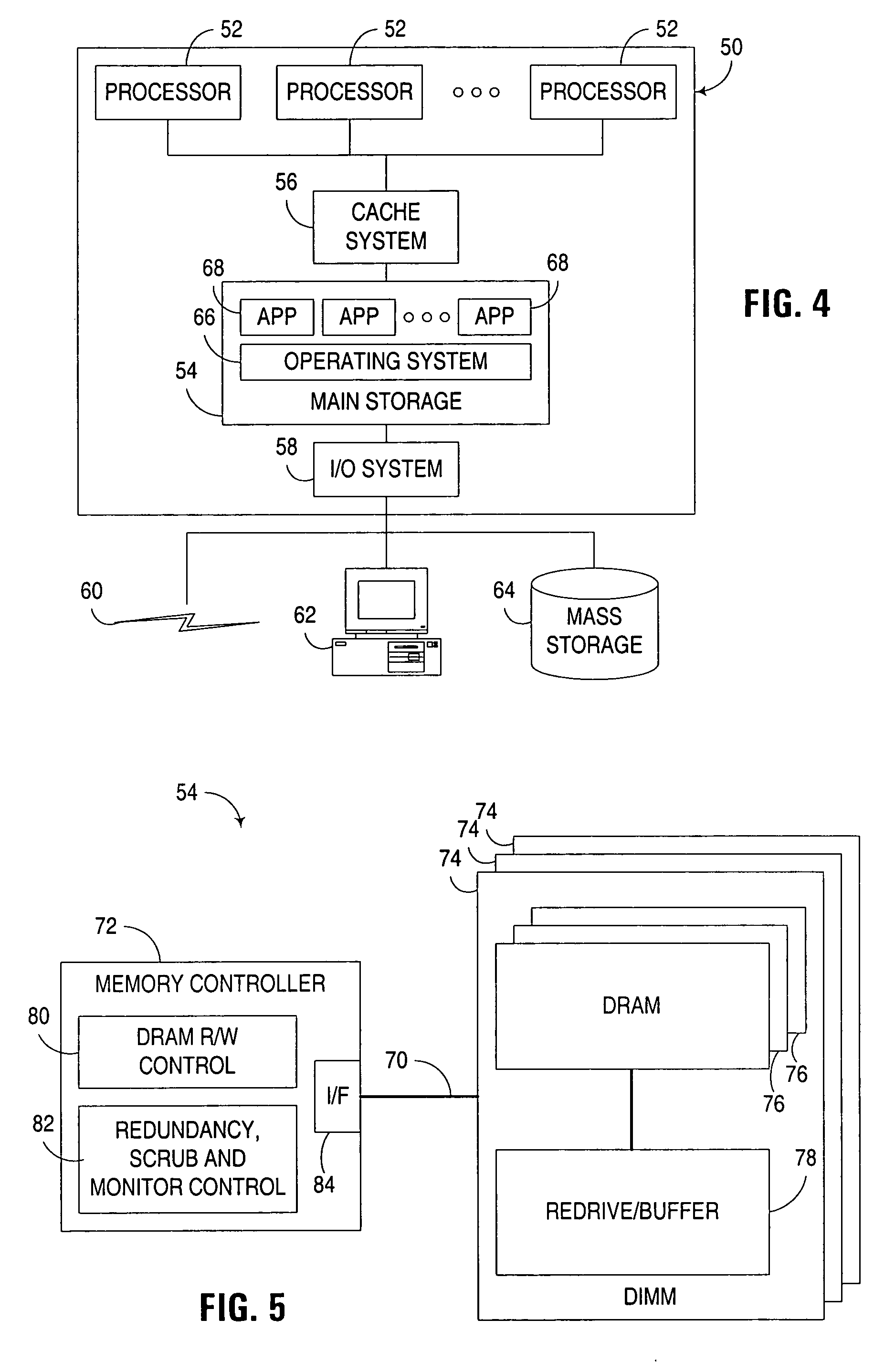Monitoring of solid state memory devices in active memory system utilizing redundant devices
a solid-state memory and active memory technology, applied in error detection/correction, instruments, computing, etc., can solve problems such as system crashes affecting large numbers of users, loss of bits, poor timing characteristics, etc., and achieve the effect of facilitating active monitoring of solid-state memory devices
- Summary
- Abstract
- Description
- Claims
- Application Information
AI Technical Summary
Benefits of technology
Problems solved by technology
Method used
Image
Examples
Embodiment Construction
[0020] The embodiments discussed and illustrated hereinafter essentially utilize redundant memory devices in a solid state memory system to temporarily replace active memory devices for the purpose of testing the active memory devices without interrupting system access to the memory address ranges allocated to such active memory devices. Among other benefits, such a technique enables active monitoring to be performed on the various memory devices in an operational memory system, including (if desired) data bits, check bits and / or redundant bits in the system.
[0021] An active memory device is effectively replaced through dynamically transitioning all or part of the memory address range allocated to that active memory device to a redundant memory device. When dynamically transitioned, memory access requests directed to memory addresses within a transitioned memory address range will be redirected to the redundant memory device. Moreover, typically any data stored in an active memory ...
PUM
 Login to View More
Login to View More Abstract
Description
Claims
Application Information
 Login to View More
Login to View More - R&D
- Intellectual Property
- Life Sciences
- Materials
- Tech Scout
- Unparalleled Data Quality
- Higher Quality Content
- 60% Fewer Hallucinations
Browse by: Latest US Patents, China's latest patents, Technical Efficacy Thesaurus, Application Domain, Technology Topic, Popular Technical Reports.
© 2025 PatSnap. All rights reserved.Legal|Privacy policy|Modern Slavery Act Transparency Statement|Sitemap|About US| Contact US: help@patsnap.com



